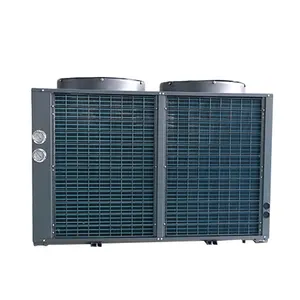Types of water heater
Space heaters are typically categorized based on their heating mechanism and where they are used. Here's a brief overview of some common types:
-
Electric Space Heaters:
Electric space heaters are portable and can quickly heat small rooms. They use electric coils or radiant panels to generate heat, which is then dispersed using fans or reflective surfaces. These heaters are energy-efficient and often equipped with safety features like tip-over protection and cool-touch exteriors. Electric space heaters are ideal for individuals seeking a supplementary heating source during colder months.
-
Propan Space Heaters:
Propane space heaters are an excellent backup heating option for homes or buildings without electricity. They use propane gas to produce heat, which is then distributed throughout the area using fans or radiant heat panels. These heaters are generally more efficient and cost-effective than electric models. Additionally, propane space heaters can be used indoors and outdoors, making them versatile for various heating needs.
-
Solar Space Heaters:
Solar space heaters are an environmentally friendly and energy-efficient option for heating indoor spaces. They utilize sunlight captured by solar panels to generate heat, which is then stored in a thermal mass or directly used to warm the air. Solar space heaters reduce reliance on fossil fuels and electricity, helping lower greenhouse gas emissions and saving money on energy bills. Additionally, they are typically very low maintenance and can be used in various climates.
-
Hydronic Heaters:
Hydronic space heaters are an efficient and comfortable option for heating indoor spaces. They use hot water circulated through pipes or radiators to produce heat, which warms the air in the room. Hydronic heaters provide consistent, even heat and can be powered by various energy sources, including electricity, gas, or oil. Additionally, they are often used in conjunction with underfloor heating systems for maximum comfort and efficiency. Hydronic heaters are an excellent choice for those seeking a reliable, gas-powered heating solution.
-
Micathermic Heaters:
Micathermic space heaters blend convective and radiant heating to provide efficient warmth in indoor spaces. They use mica panels to generate heat, which is then distributed using natural convection and infrared radiation. This type of heater heats the air and objects in the room, providing a more comfortable and even temperature. They are typically lightweight, portable, and equipped with safety features like cool-touch exteriors and tip-over protection.
Functions and Features of a B A Heater
The functions and features of B and A heaters vary from type to type. However, certain functionalities are present in almost all heaters. Below is a table that highlights the functions and features of BA and AB heaters.
- Heat Production: The primary function of both A and B-type oil heaters is to provide space heating. They accomplish this by warming air or surfaces in a designated area, which improves comfort during cold weather. The heaters can also maintain a specific temperature in industrial settings.
- Available Heating Modes: A/B type electric heaters come in various heating modes, including fan, radiant, and infrared modes. The fan mode utilizes a fan to blow heated air, while the radiant mode warms the surfaces directly using infrared rays. The three modes offer flexible heating options to the users and help them select a heater that meets their requirements.
- Temperature Control: Most A/B heaters come with adjustable thermostats that help users set different desired temperatures. The thermos are designed to monitor the temperature of the surrounding area and switch the heating element on or off to maintain a specific temperature. This feature enhances comfort and energy efficiency in the heater.
- Safety Features: B and A heaters have various safety features, such as cool-touch exteriors, tip-over protection, and overheat protection. The safety measures minimize the risk of accidents, such as burns and fires. For instance, tip-over protection automatically shuts off the heater in case it tips over.
- Portability: Derive from the type of B/A heater, A/B heaters may include features like built-in handles and castor wheels that improve portability. The features enable users to move them in and out of rooms.
- Quiet Operation: As mentioned earlier, the A/B type heater works through various heating mechanisms. Some, like ceramic or fan-forced models, are known for their relatively quiet operation.
- Electrical Efficiency: A/B heaters use electricity efficiently to lower heating costs. The efficiency reduces the amount of energy consumed by the heater without affecting the performance.
Scenarios
BA heaters are ideal for use in large bays or warehouses. They are also suitable for commercial and industrial heating applications for the following reasons:
- Fast Heating: BA heaters can heat up spaces with high ceilings within a short time. That's because they heat objects and building materials before warming up the air. This process reduces heating costs because already warmed-up air in the room doesn't escape outside. Also, since the air isn't heated first, less energy is required to maintain comfortable temperatures even during very low outside temperatures.
- Lower Fuel Consumption: These types of heaters consume less fuel because they use a modulating burner, which is a more efficient combustion system. The burner works by adjusting the burner's firing rate to match the heater's demand at any time. This element makes BA heaters more energy-efficient compared to traditional heating methods.
- Reduced Emissions: BA heaters produce fewer greenhouse emissions than many other types of heaters, making them kinder to the environment. This is mainly because they use the more efficient burner system. Reducing pollution is important for businesses that want to maintain good corporate social responsibility.
- High Temperature Heating: BA heaters can provide heating that is much hotter than other types of space heaters. This feature is a major advantage in industrial processes that have to be completed at high temperatures and in areas with high starting temperatures. A BA heater can provide heating of up to 190 degrees Fahrenheit.
Using BA heaters to heat large spaces such as warehouses helps businesses save money and energy.
- Workplaces: A BA heater is useful for heating areas where air must be kept at a minimum temperature to prevent worker or product damage. Warehouse loading docks, for instance, are best kept warm with BA heaters so that goods do not freeze or get spoilt due to low temperatures.
- Efficient Heating: BA heaters are used in heating applications where it's quite costly to heat the air and hold it there. In buildings with high ceilings, air warmed by conventional heaters tends to rise to the ceiling and remain there. Because of this heat loss, BA heaters are more ideal for such applications where heating the air is more expensive.
Balcony heaters provide the following benefits:
- They allow the creation and comfortable enjoyment of an outdoor living space/area. Patios, balconies, and decks are ideal gathering spaces when protected against chilly weather conditions.
- Installing a balcony heater enables increased use of a balcony or patio throughout the day. Installing a heater allows enjoyment of a warm and cozy space even during winter evenings.
- balcony heaters are stylish and cozy, creating a great atmosphere for outdoor spaces.
How to choose b a heater
Business buyers of heaters must consider their target customers and the market in the heating industry. They should consider the applications, heating capacity, and features of different heaters before making a decision. Using the following tips can help bulk buyers choose the right heaters for their customers.
- Match heater styles with applications: When choosing heaters, buyers should match the heater styles with applications and consider portable models like propane space heaters and electric heaters for added convenience and efficiency.
- Consider heating capacity: Buyers must understand the heating capacity of different heaters. They should calculate the amount of heat needed for a particular space to determine the heater's efficiency. Usually, heating capacity is in BTUs or watts. Buyers can use BTUs per hour to estimate the capacity to heat a certain space, which is a good indicator of efficiency.
- Select features and technologies: Buyers should look for energy-efficient heaters with programmable features that improve comfort while reducing operating costs. Advanced heaters with unique heating technologies provide consistent and even heating for enhanced comfort.
- Take heaters for different markets: Different markets require different heaters. For instance, buyers in regions with cold climates can stock up furnaces and other powerful heating systems. On the other hand, buyers in moderate heating areas can stock up portable space heaters. Additionally, areas with homes power backup systems can require gas-powered heaters.
- Buy heaters with safety features: Bulk buyers can stock heaters with automatic shut-off systems. These systems turn off the heater when it reaches a certain temperature to avoid fires, explosions, and fatal accidents. They should choose heaters with sensor shutdown to turn off the heater when the oxygen level in the air is too low.
- Buyers warranty and replacement policy: Business buyers must check the manufacturer's warranty policy before making a purchase. They should choose heaters from manufacturers with reasonable warranty policies in the event of manufacturing defects. Also, they should ask about replacement policies and how they can handle faulty heaters.
A Q & A
Q1: How long can the B80 aspheric barrel heater last?
A1: The B80 aspheric barrel heater can last for a very long time if users take good care of it. Its maintenance is simple and is based on routine checkups. The heater has a pretty durable structure, which allows it to withstand many years of use.
Q2: How you can control the temperature of B80 aspheric barrel heaters?
A2: Different models of the B80 aspheric barrel heaters offer different temperature controlling options. Users can use a simple thermostat for the basic model. More advanced models will have a controller that provides PID temperature control.
Q3: What materials are 최신 B80 aspheric barrel heaters에 사용 되는?*
A3: The materials used to make the B80 aspheric barrel heaters will depend on the type of heater and its specifications. However, in most cases, the heaters will have an insulated metal sheath. The metal sheath will be made from stainless steel or aluminum. The heating element will be embedded in the metal sheath.
Q4: What is the power supply requirement for B80 aspheric barrel heaters?
A4: The power supply requirement for B80 aspheric barrel heaters will depend on the model and design.
Q5: Are B80 aspheric barrel heaters safe to use?
A5: When users follow the safety guidelines properly, the B80 aspheric barrel heaters are safe to use. The heaters have various safety features that help to protect users and prevent accidents.















































































































































































